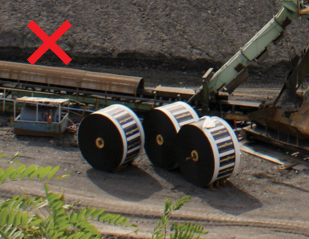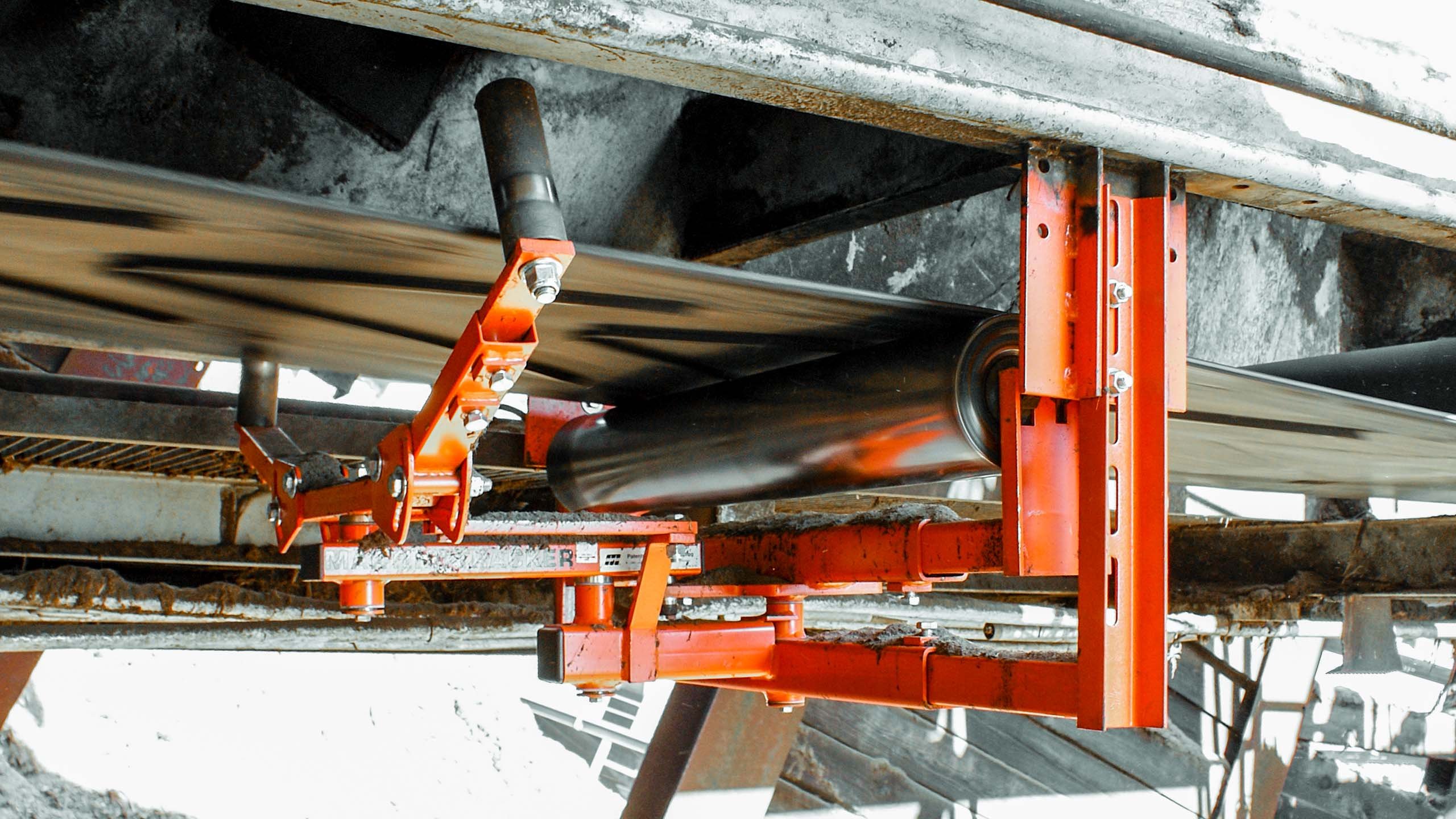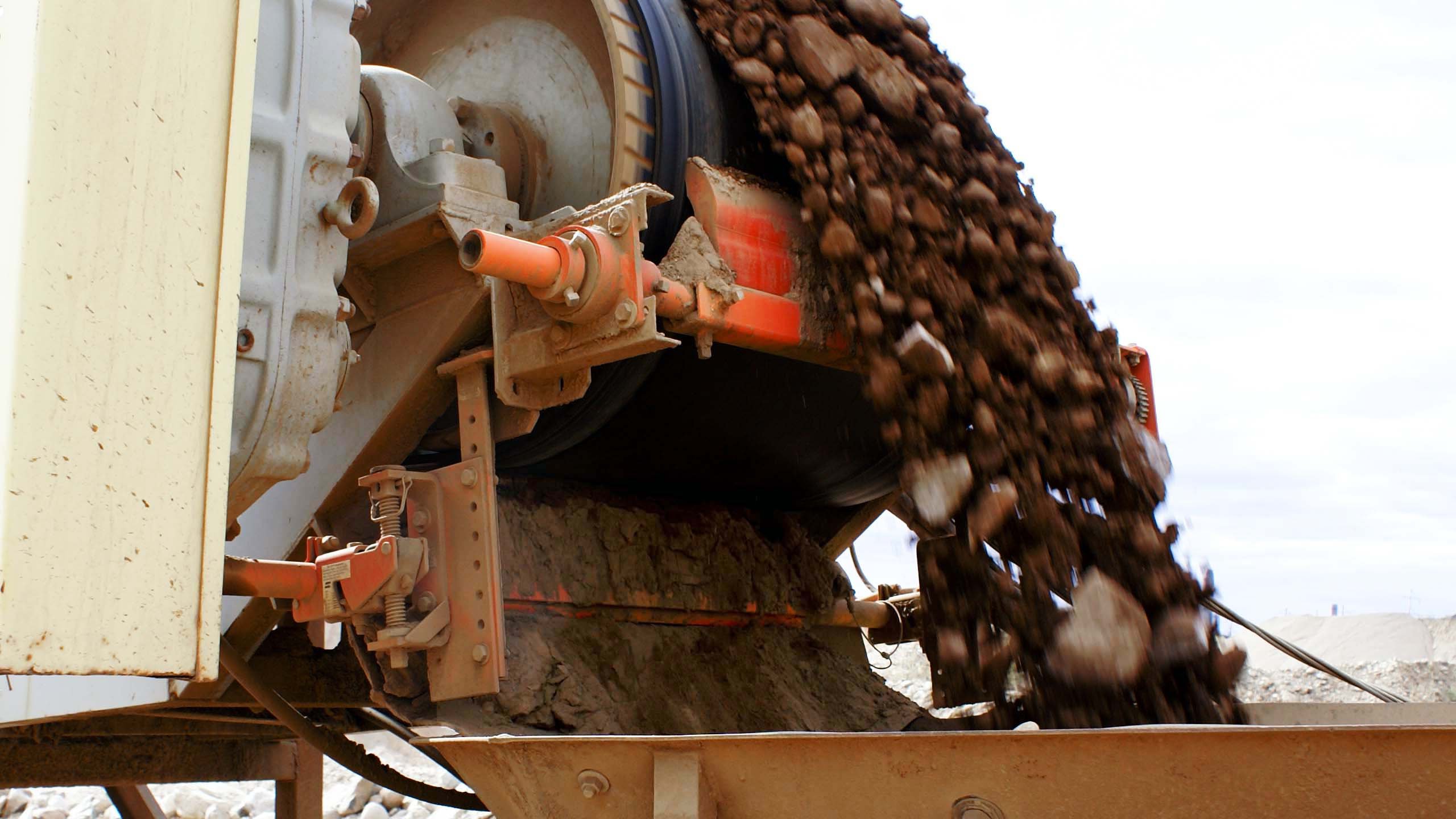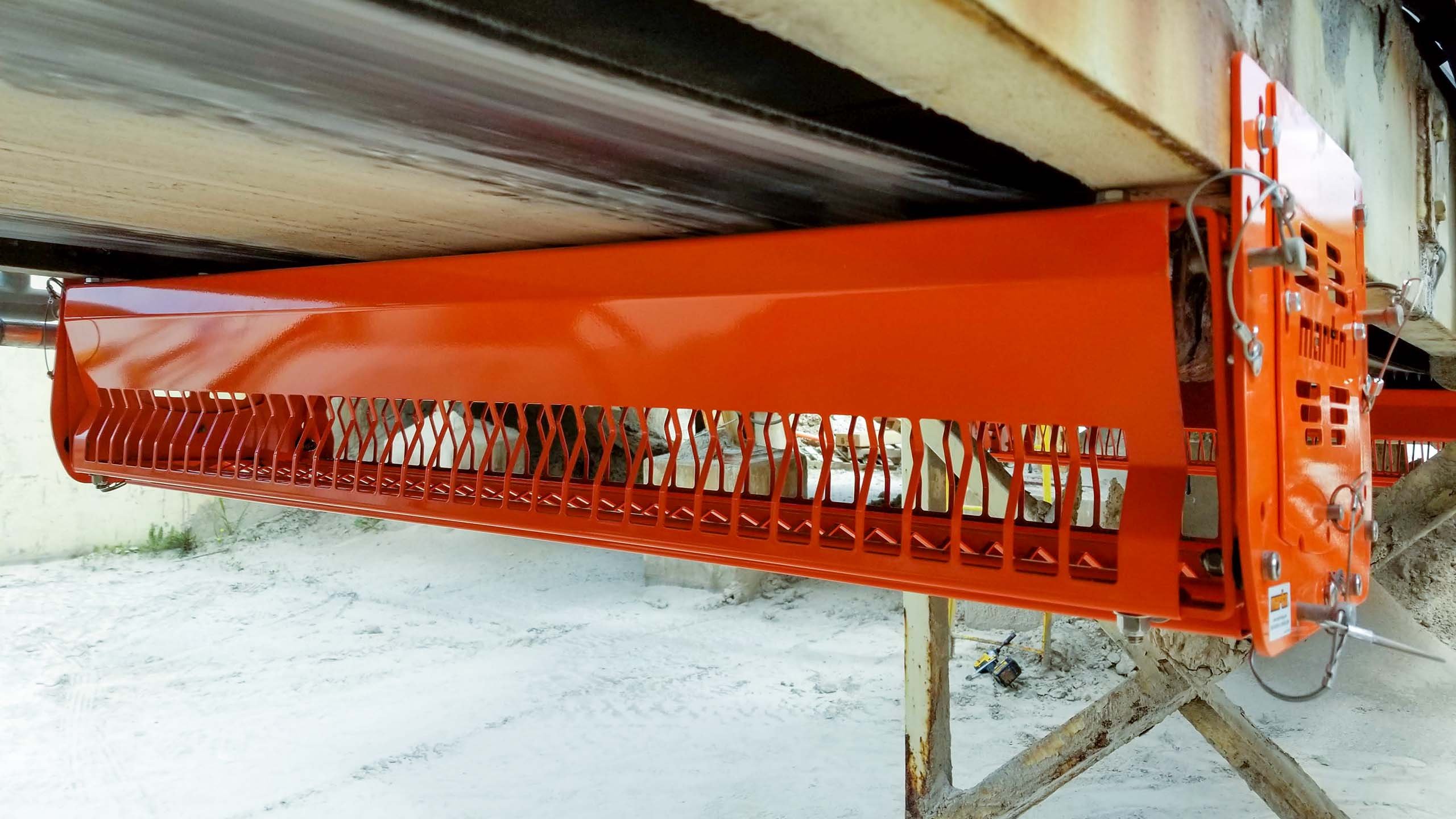The Avoidable Problem of Belt Wander
To properly train a conveyor, the first step is to survey the existing system to understand the state of the structure and components and to determine the causes of mistracking.
As Clar Cukor noted in the undated Georgia Duck (now Fenner Dunlop) monograph Tracking:
The problem of tracking should be approached from a systems point of view. The belt may well be at fault – however, it is more likely merely reacting to a structural defect of maladjustment in the system. …[A conveyor belt] is flexible and if designed, manufactured, slit and cut properly, will ‘go where directed’ by the conveyor systems as designed and built. The conveyor belt serves as an indicator and should be so regarded.
Belt wander can be caused by a number of problems. Factors contributing to belt wander include misalignment of conveyor components, off-center loading of cargo, accumulation of fugitive material on rolling components, poor belt splices, structural damage caused by inattentive heavy-equipment operators, ground subsidence and many others. And these problems may occur in any combination, greatly complicating the process of correction.

In spite of the complexity of these problems, they are solvable. Misaligned components can be straightened, chutes can be redesigned to load the cargo in the center of the belt, material accumulations can be prevented or removed, belt splices can be improved and operators can be trained. The challenge comes in identifying which of the long list of possibilities is the specific cause of a given belt’s problems. Once the cause of mistracking is identified, it can be corrected.
Causes of Mistracking
In many cases, the cause of mistracking can be determined from the form the mistracking takes. When all portions of a belt run off-center at one certain part of the conveyor length, the cause is probably in the alignment or leveling of the conveyor structure, idlers or pulleys in that area. If one or more sections of the belt mistrack at all points along the conveyor, the cause is more likely in the belt construction, in the splice(s), or in the loading of the belt. If the belt mistracks when full and then tracks in the center when empty or vice versa, the cause is usually off-center loading or buildup in the chute that creates varying loading situations.
Belt mistracking can be caused by a number of factors, but all mistracking leads to subsequent problems if not identified and resolved.
The most common causes of mistracking can be split into three groups: faults with the belt or its splices; faults with the conveyor structure, components or the environment; and faults with material loading.
Wander Due to Faults with the Belt or its Splices
- Belting
- The belt is bowed, cambered or cupped
- There are defects or damage in the carcass (plies or cords) of the belt
- The belt edge or cover is damaged
- There is belt degradation from exposure to the elements or to chemicals
- Manufacturing and application
- The belt is poorly matched to use structure or application
- The belt has a “bow” or “camber” from its manufacturing process
- The belt was not stored properly
- Splices
-
- There was poor installation of a vulcanized or mechanical splice, resulting in a splice that is not square to the belt
- A belt was formed from several pieces joined at the wrong ends, resulting in a camber or cooked section
- Different types, thicknesses or widths of belt have been spliced together
- The belt has splices that are damaged or coming apart
-



















Leave Comment